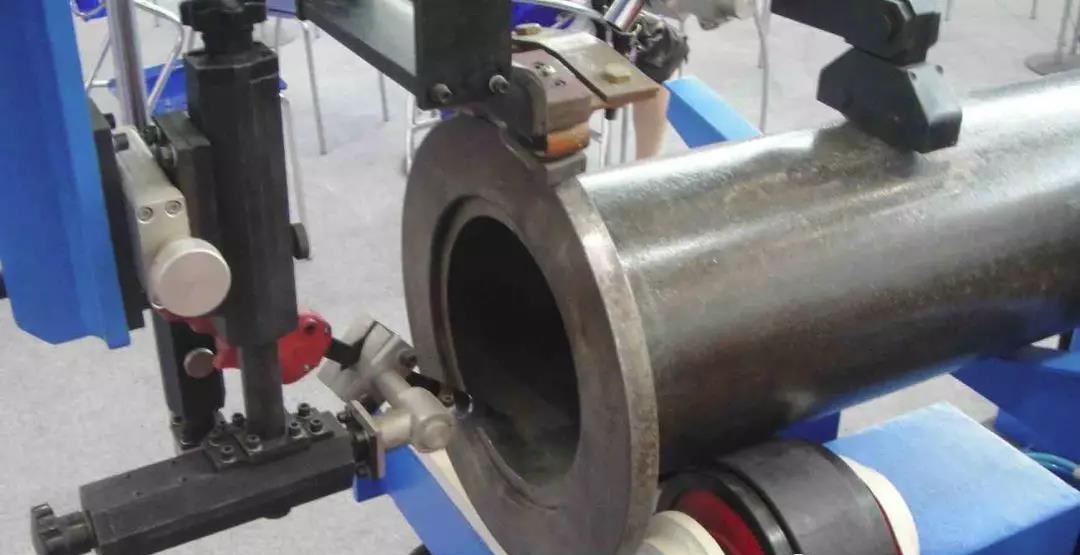Industry News
A brief introduction to 7 connection methods for building pipeline
Posted: 05/27/2020 16:00:45 Hits: 40
According to the use and pipe materials, the commonly used connection methods for building pipeline are: ① threaded connection, ② flange connection, ③ welded connection, ④ groove connection (hoop connection), ⑤ cartridge connection, ⑥ hot melt connection, ⑦ socket connection. This article explains in detail the standard practices of common connection methods for building pipeline, and it is worthy of reference for allies!
1. Threaded connection
➤ Thread processing
Cut in 2-3 times, the thread should be clear, complete and smooth, without burrs and messy wire. If there is broken or missing wire, it shall not be greater than 10% of the total number of threads. The thread should also meet the requirements of assembly tolerances, with a taper of 1/16, to prevent loose fit or too tight fit between threads.
· National standard "55 ° Sealed Pipe Thread" GB / T7306, suitable for thread connection of pipes, valves, pipe couplings, cocks and other pipe fittings.
➤ Thread assembly
After tightening, expose 2-3 thread runouts, remove excess filler, and paint exposed thread runouts with red lead to prevent rust. The painting width of red lead is consistent, the coating is uniform, and there is no flow or leakage.
2. Flange connection
➤ Pipe flange
1) The specifications and model of the matching flange are the same; when connecting with the equipment flange, we should match pipes according to the flange specifications;
2) The flange connection is coaxial and parallel, and the flange surface is perpendicular to the center of the pipe;
3) The tightening bolts have the same specifications and the same direction, and the exposed length of the bolt is 1/2 bolt diameter or flush with the nut;
4) When connecting valves, the nut is placed on the side of the valve;
5) The top two screw holes of the horizontal pipe flange are kept horizontal, and the two screw holes of the vertical pipe flange against the wall are parallel to the wall.
· Flange standard: National Standard GB9112-9123, Ministry of Machinery Standard JB79-86, Ministry of Chemical Industry Standard HG5008-5028 and Ministry of Petroleum Industry Standard SYJ4. The center of flange bolt hole is the same. The pipe diameter of JB standard and HG standard is "small outer diameter", GB standard and SYJ standard are "large outer diameter", and the number of bolt holes of individual flanges should be different when used.

3. Welded connection
➤ Welded groove
According to the specification requirements, the groove is generally V-shaped, the angle of the groove is 60-75 °, and the gap between the pair is 2-3mm.
➤ Weld seam fit-up
The amount of misalignment of the inner wall should not exceed 10% of the wall thickness, and ≯2mm; the amount of misalignment of the outer wall ≯3mm.
➤ Welding
1) Perform argon protection inside the welded steel pipe. After welding, picke and passivate the weld and heat affected zone;
2) The brazing of the red copper tube must not be overheated (650-750 ° C). After welding, remove the slag and other debris at the welding joint;
3) Inspect the welding appearance, no defects such as undercut, slag inclusion, cracks, spatter and so on.
After the copper pipe is welded and when the solder is fully solidified but not yet completely cooled, wipe the flux remaining in the weld with hard waste and clean water. Then apply varnish to the weld to prevent rust.
After the stainless steel pipe is welded, use a stainless steel brush to dip the acid paste to wash the weld, until it is white and bright, rinse with clean water; then wipe it with a passivating solution, scrub it with cold water, and finally rinse with hot water and dry it.
4. Groove connection
➤ Grooving
1) Check the size, roundness and manufacturing quality of the pipe orifice, which should meet the requirements of grooving;
2) Process the grooves in accordance with the prescribed time and in stages, and re-measure the depth and other dimensions of the grooves;
3) The groove processing shall not damage the galvanized layer and inner coating of the pipe.
➤ Groove assembly
1) Clean the pipe end, put on the rubber seal ring, install the hoop, and tighten the bolt;
2) The center line of the two ends of the groove is the same, and the installation direction of the groove (the position of the fastening bolt) is the same;
3) Rigid joints should be used for straight pipe sections. A flexible joint is set between 4-5 consecutive rigid joints on the pipe section.
5. Cartridge connection
Clean the insertion opening and mark the insertion depth. Insert the tube to the specified depth, keeping the axis vertical. Use a special clamping tool to clamp the connector. After clamping, use a gauge to check whether the clamping size is in place.
6. Hot melt connection
Clean the hot-melt parts and the marked hot-melt depth of the socket connection. Use a special hot-melt machine to heat the connected parts according to the specified heating time. After heating, fuse the joint according to the specified pressure and time, to form a uniform welding ring at the joint.
7. Socket connection
Before the cast iron pipe is connected, clean up the debris that affects the tightness of the socket, and put the rubber sealing ring correctly. According to the depth required by the construction standard, insert the pipe and maintain the verticality of the two pipe sections.
Post URL: https://www.landeepipe.com/a-brief-introduction-to-7-connection-methods-for-building-pipeline.html
Landee Pipe is a professional
industrial pipe manufacturer based in China, we have been producing pipe for a variety of applications, and covering areas of pipe manufacturing, exporting and trading. welcome to access our website: https://www.landeepipe.com.


